PROTECT YOUR DNA WITH QUANTUM TECHNOLOGY
Orgo-Life the new way to the future Advertising by AdpathwayBy Peter Hinow
Originally from Dresden, Germany, Peter Hinow is a mathematics professor at the University of Wisconsin in Milwaukee, Wisconsin, USA. One day, when left unsupervised at home, he toyed around with a 300 mm lens that his better half had bought as part of a camera package, and which had sat several years in its original box unused. It turns out, they can make distant objects appear closer!
Yes, the title of this post is a joke. But here is my wager: in at most ten years, an IgNobel Prize in biology will be awarded to a team of (presumably British) ornithologists who have investigated exactly this question (see https://improbable.com/ for some exciting contemporary “improbable” research). Anyway, here is a small collection of birds I have seen over the years on (or very near) university campuses while I was visiting them on various business trips.
We begin with a trip from my “pre-birding” era, when all I did was occasionally aim my camera with its 18-55 mm lens at a random bird in the park. About a decade later, I would spend a substantial amount of time figuring out what each of these species was, silently cursing myself for not having discovered this hobby earlier in life. At Centennial Park, close to the University of Sydney, I had come across these magnificent Australian White Ibises (Threskiornis molucca). Thus, they appear on my life list way before the “garden variety” birds of Milwaukee, where I live most of the time.
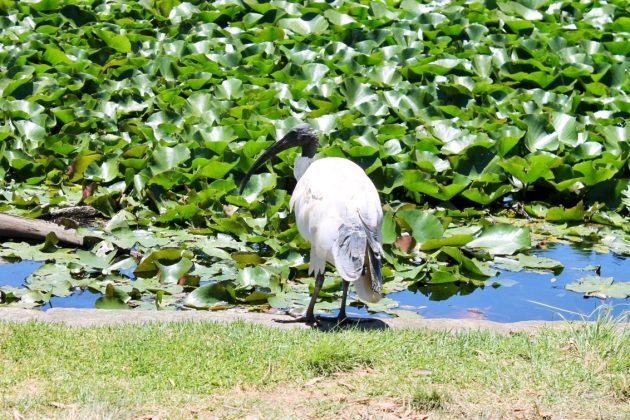
Australian White Ibis (Threskiornis molucca), Sydney, Australia; January 2013.
A few years later, and then with proper preparation, I was fortunate to visit a colleague at the University of Pretoria in Gauteng, South Africa. As I was giving my (mathematics) talk there, I heard the deafening call of a Hadada Ibis (Bostrychia hagedash) through the open windows. The bird is, of course, also named after its call, a very common phenomenon in the animal world called “onomatopoeia”. If you play Scrabble, you are now officially unbeatable!
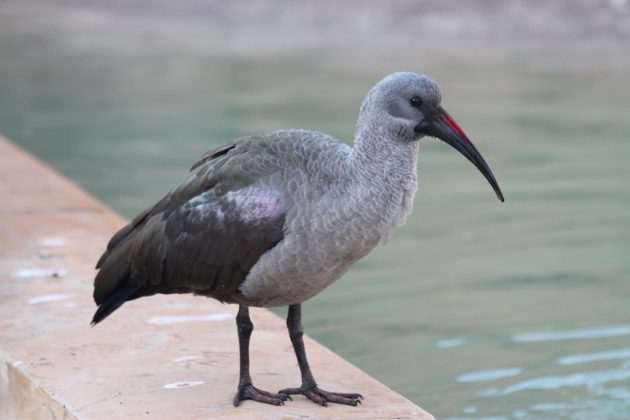
Hadada Ibis (Bostrychia hagedash), University of Pretoria, South Africa; June 2017.
Scientists love to hold their meetings in nice places. In Asia, one of the nicest places a conference can be organized at is Taipei, the capital of Taiwan, or, as connoisseurs will know, the Republic of China. The city has a botanical garden where one can see the highly prized Malayan Night Heron (Gorsachius melanolophus). Unfortunately, a lot of species are introduced in Taiwan, starting with the most notorious of them all, the Common Myna (Acridotheres tristis). On the other hand, the relatively small island is home to an amazing 19 endemic species, for example, the colorful Taiwan Barbet (Psilopogon nuchalis). It is most easily spotted by looking for large groups of people sitting behind cameras with arm-length lenses looking intently at a hole in a tree. The National Taiwan University occupies a large area dotted with ponds, wetlands, and just gorgeous greenery. Here is a pair of Black Drongos (Dicrurus macrocercus) on the campus of NTU, apparently currently not on speaking terms.
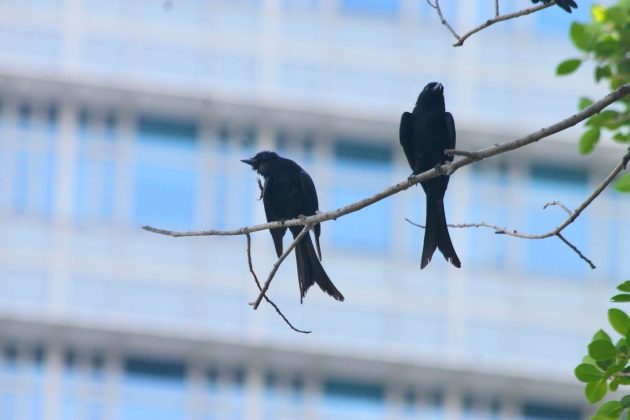
Black Drongos (Dicrurus macrocercus), National Taiwan University campus, Taipei, Taiwan; July 2018.
Arizona, in the southwestern United States, is a place rich in cultural and natural heritage, for example, the world-famous Grand Canyon, the legacy of Native Americans, and the towering Saguaro cactuses. For the birder attending a mathematics conference, Phoenix offers a rich variety of desert specialties such as the Cactus Wren (Campylorhynchus brunneicapillus) or the Black-throated Sparrow (Amphispiza bilineata). It is also home to a famous population of feral Rosy-faced Lovebirds (Agapornis roseicollis), birds whose natural home is the Namib Desert in southwestern Africa. Instead of posting a picture of an incredibly cute, but introduced species, here I am going with a Great-tailed or Mexican Grackle (Quiscalus mexicanus). The Icterids of the New World are among the most fascinating families of songbirds, with a wide variety of colorations and behaviors. The sound of the Great-tailed Grackle always evokes in me fond memories of vacations on Mexico’s Caribbean or Pacific coasts. Other tourists could almost find them a nuisance at breakfast, but not me.
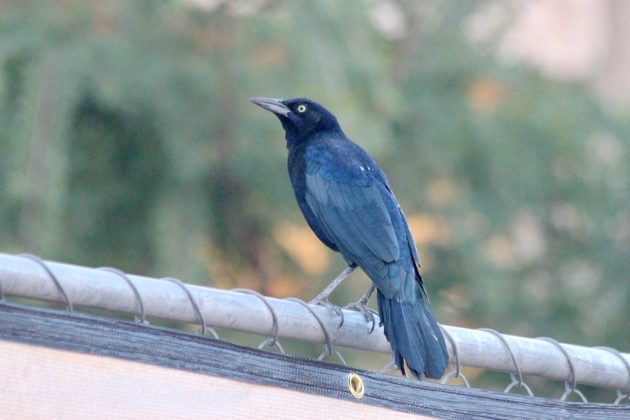
Great-tailed Grackle (Quiscalus mexicanus), Arizona State University campus, Tempe; October 2019.
Undoubtedly, one of the best things about my job is the ability to get a sabbatical – a whole semester without teaching duties – every seven years. My last one so far, I was able to spend at my alma mater, the Dresden University of Technology. That allowed me to catch up with a lot of Old-World species that every European birder long had under his or her belt. While not exactly the most exciting hotspot in the city, the university campus still offered quite a few exciting photography opportunities. This Rook (Corvus frugilegus) seems to be surprised that someone would take its picture while standing between tram tracks.
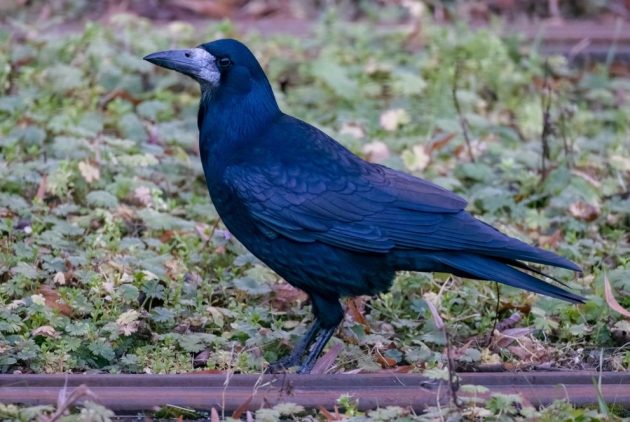
Rook (Corvus frugilegus), Dresden University of Technology; January 2023.



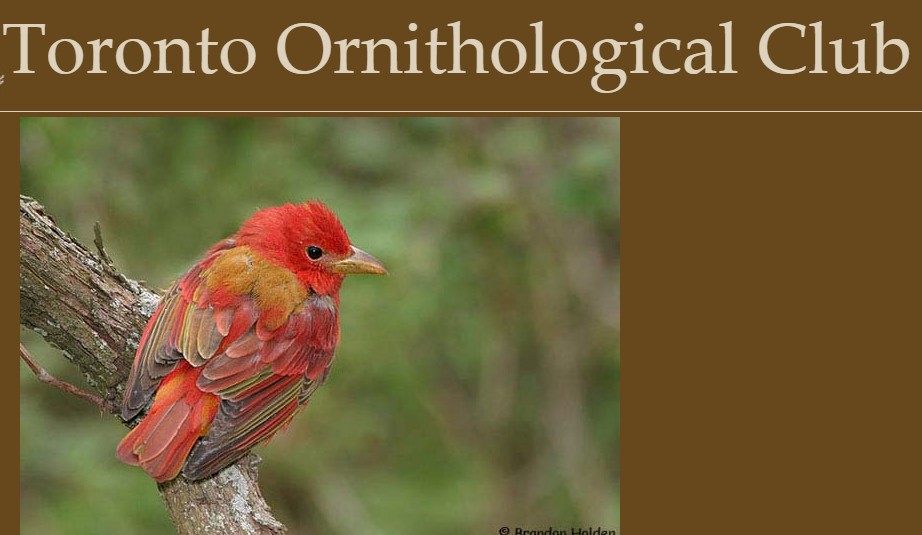



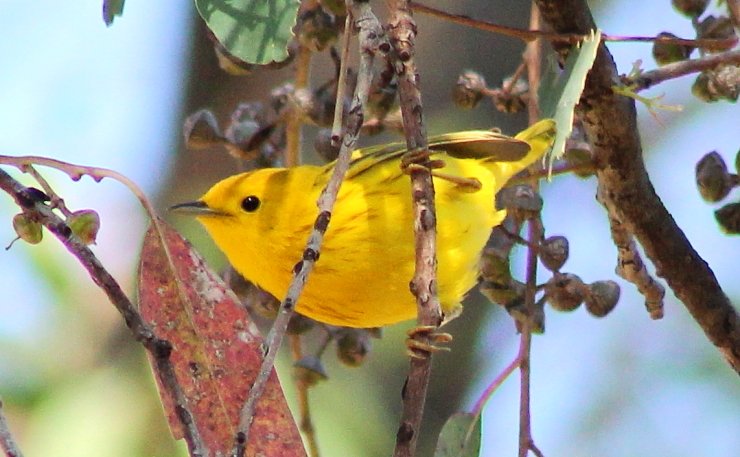















 English (US) ·
English (US) ·  French (CA) ·
French (CA) ·